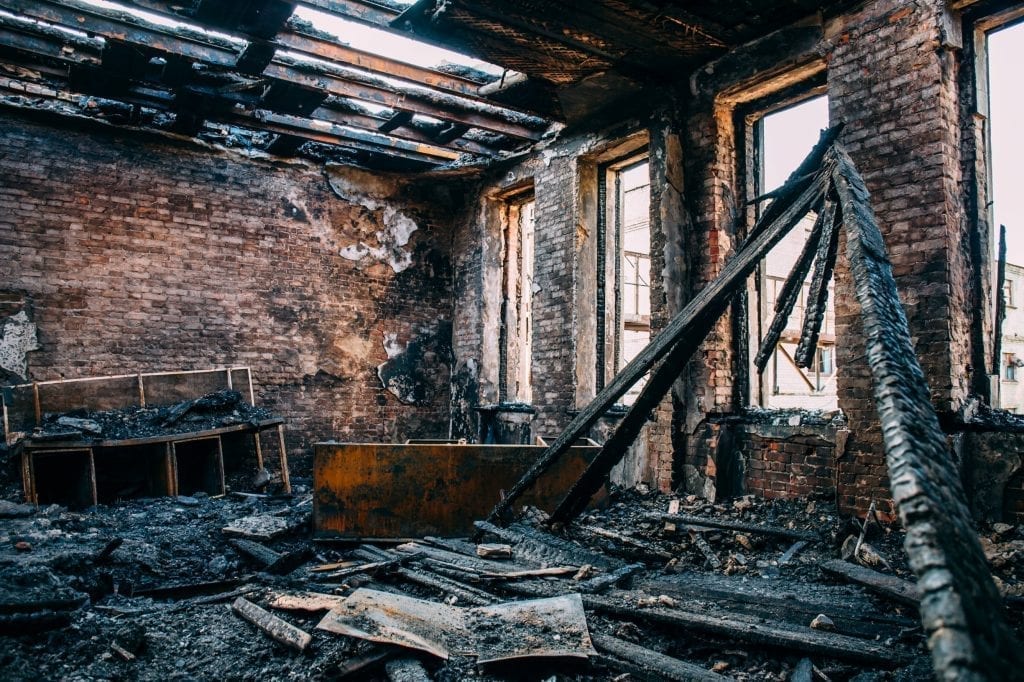What is fire damage mitigation? When the time comes to decide whether you’ll tackle the work on your own or call professionals in to take care of the situation, you need to understand what mitigation includes. When you fully understand the task and all of its elements, you can make a well-informed decision.
What Is Fire Damage Mitigation?
Mitigation focuses on reducing damages and losses, both property and life, after a disaster, such as a major fire. Effective mitigation must take place immediately after the disaster to keep financial and physical consequences at a minimum. The Federal Emergency Management Agency warns that neglecting to take appropriate actions can put your safety and financial security at risk. There are four essential elements of fire damage mitigation:
- Identifying potential hazards
- Assessing areas of vulnerability
- Creating an effective mitigation strategy
- Carrying out cleanup and repair activities
Prevention is the final step of thorough remediation and should happen during the process of repairing and cleaning your damaged property. No mitigation plan is complete without taking steps to prevent the same destruction from happening again.
Identifying Potential Hazards
After a fire, there are several sources of potential risk. These include the inhalation and spread of soot. This substance is rich in contaminants and poses serious health risks to anyone entering your property. Smoke from the fire often moves far beyond the immediate area of the flames, so soot contamination could exist in a much wider area. Other potential hazards include new fires springing up, exposure to contaminated water, structural weakness, and electrocution.
Assessing Areas of Vulnerability
When firefighters battle the flames of a property fire, they often create holes in the roof or walls to provide ventilation, a crucial step for maintaining safety and suppressing the fire. After the fire, however, these holes can become dangerous when approached without caution. Similarly, any structural weaknesses can present fall and injury risks.
In smoke-filled rooms and surrounded by blackened surfaces, it can be hard to recognize hazards. This is one reason that it’s so important for professionals to assess areas of vulnerability. Professionals may test the structure, looking for places where the property is vulnerable to further damage. They may look for water-affected building materials, high-risk areas for mold growth, and further possible sources of damage.
Creating an Effective Fire Damage Mitigation Strategy
Which should happen first: ventilating the property to get rid of smoke or removing water? Should the electricity be shut off first or should burst pipes be handled first? There are many variables that affect the proper course of action after a fire. The number of possible cleanup and mitigation scenarios increases with every new property dynamic. Remember that two goals of mitigation are to prevent further damages and reduce the potential for injuries. As a recovery plan is put together, these goals will influence the order of responses and repairs.
Carrying Out Cleanup and Repair Activities
Fires leave a lot of devastation in their wake. The combination of fire, smoke, soot, and water makes the cleanup efforts particularly complex and difficult. Fortunately, professionals are trained to recognize when to clean up and repair versus removing and replacing items. They have the tools and equipment necessary to remove smoke odors from the air and soot from deep within carpets and other surfaces. Make sure cleanup crews can get in touch with you throughout the cleanup process, so you can be involved in decisions and receive updates quickly.
What To Do While You Wait for Fire Damage Mitigation Professionals
Right after the fire, as you wait for professionals to arrive, there are several things you should do:
- Make sure everyone receives the necessary medical attention.
- Avoid slip and fall injuries and stay away from electrical hazards.
- Restrict movement throughout the property to minimize the spread of soot and damage.
- Stay away from pools of water.
Your primary aim right after the fire should be the safety and well-being of everyone affected by the disaster.
It is very important that fire damage mitigation and remediation begins as soon as possible after the fire has been put out. Professional restoration technicians and services are an essential element of successfully recovering from a property fire. Contact United Water Restoration Group to learn more about the actions you should take when you’re affected by the fire and how professionals can help you avoid fires and other disasters in the future.





